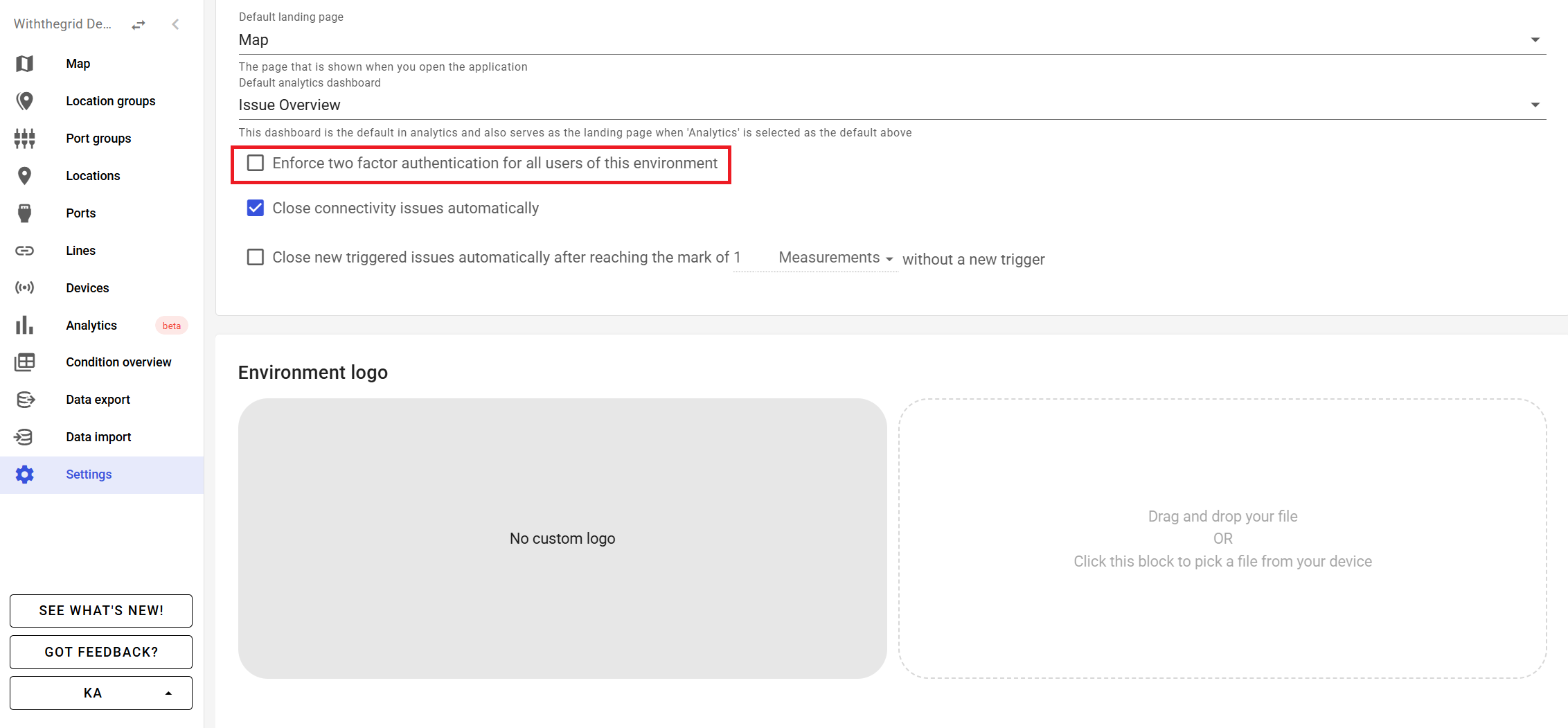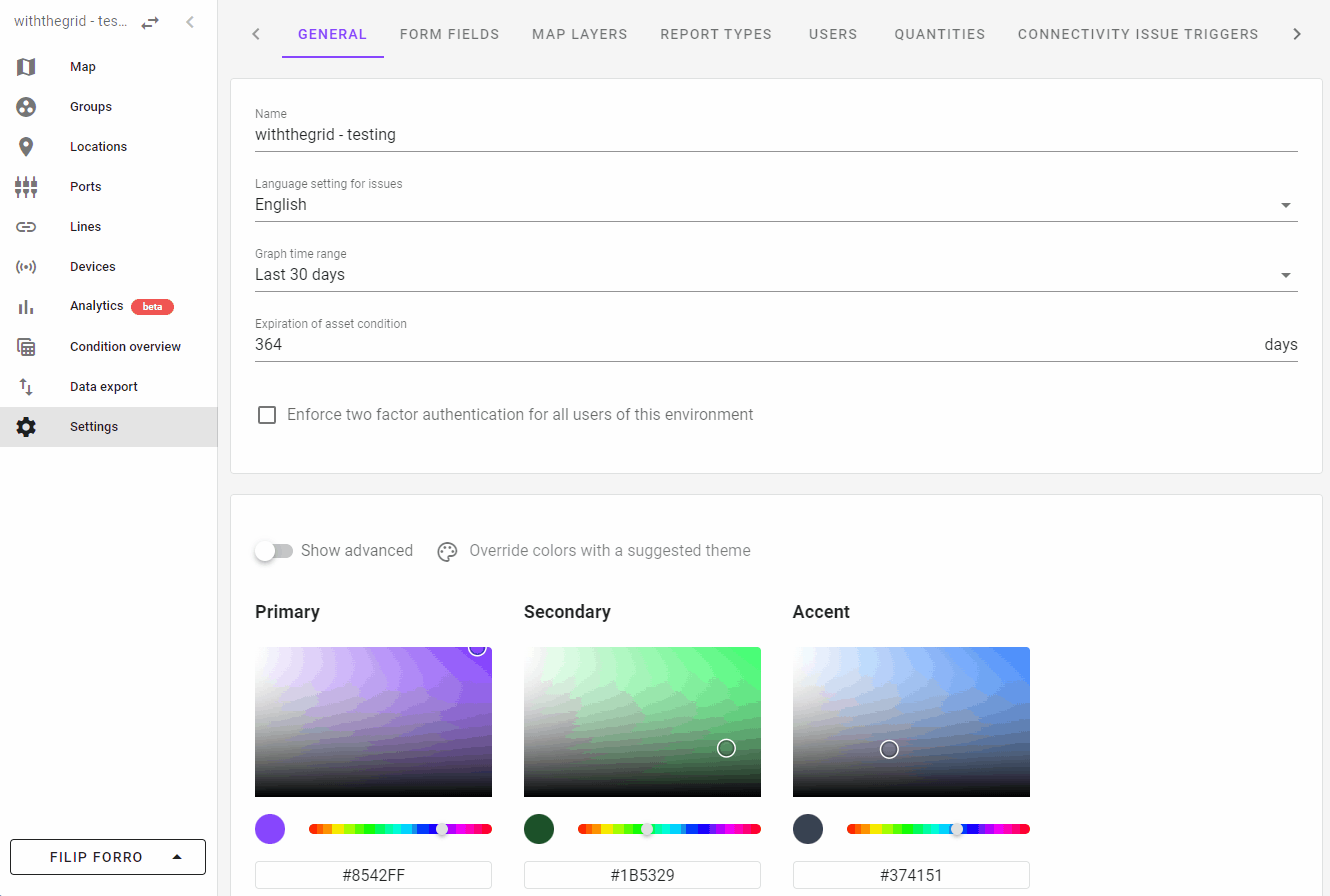Environment settings
In the settings overview the monitoring environment can be configured. There are many aspects which can be adjusted. Under general settings, the name of the environment can be changed as well as the language in which the issues should be generated. It is also possible to change the default graph range.
Users can change the expiration of asset condition. This has a direct influence on the visualization. An asset will be green if no critical or serious issue is open and there has been a report in the last number days, where the default setting is 365 days.
In addition to enabling , an administrator of the monitoring or connectivity environment can enforce two-factor authentication for all users with access to that environment.

For 2FA you need an authenticator app on your phone such as: Microsoft, Google, Raivo.
Custom Themes
You can now create a custom theme for each monitoring and connectivity environment or select from a set of suggested themes. The set of preconfigured themes can be accessed by selecting Override colors with a suggested theme. You can configure the following settings:
- Primary - is the color you’ll find on all major buttons, links, etc.
- Secondary - is the color secondary color setting that is currently on get claim token(s) button
- Accent - Accent is currently unused by the platform
Advanced settings give you access to configure color of neutral, info, warning, error and success messages.

Company/organization logo
You can insert your own company or organization’s logo at the top left corner of the application. You can do this in the general settings menu scrolling down to ‘Environment logo’. Here, you can add a .png, .jpg, or .jpeg file by either picking a logo from your device or dragging and dropping one. The maximum size that won’t be resized is 187.33 x 64. The logo is now visible on the top left corner. The same applies to the connectivity environment.
